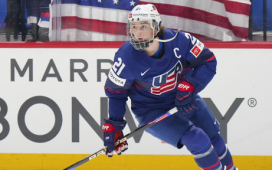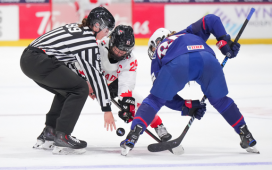Teams have all the leverage when it comes to negotiating with players coming off of their entry-level deals, yet the Maple Leafs failed to take advantage and that has become all the more clear with the price tags attached to recent high-profile restricted free agent signings.

Despite the fact we still eagerly await the Dallas Stars’ plans for Julius Honka and a resolution to Jesse Puljujarvi’s situation with the Edmonton Oilers, it’s safe to say the period of angst surrounding the NHL’s restricted free agents coming off entry-level deals is thankfully over, just in time for the first puck drop of the season. And armed with that knowledge, we can say one thing with 100 percent certainty. And that is, the Toronto Maple Leafs blew it big-time. Leverage is only a weapon when you decide to use it and there has never been a team that has used the advantages afforded it by the collective bargaining agreement less than the Maple Leafs.
That much was clear in the avalanche of contracts for young stars that followed the Mitch Marner signing. All summer we waited for the Marner contract to be done, thinking that it would set the market for the other players. Didn’t happen. It’s like the Leafs were playing under one set of rules and everyone else under another. So when the trade deadline comes and the Leafs have no cap room to supplement their roster for the playoffs, you’ll be able to point directly back to GM Kyle Dubas’ machinations this off-season as the culprit.
All told, for each of the next five seasons, the Maple Leafs will devote $29.5 million in cap space to Marner, Auston Matthews and William Nylander. The top-three paid players on their second contracts average $12.9 million for the 28 other teams in the NHL that have them. Two teams, Dallas and Tampa, don’t have three players on their second contracts. Granted, the vast majority don’t have close to the the quality the Leafs have in that group, so it’s a good problem for them to have. (For example, the New York Islanders are last in the league with this group at just $5.7 million, Anthony Beauvillier at $2.1 million, Ryan Puloch at $2 million and Adam Pelech at $1.6 million.) The only team that is even close to the Leafs are the Edmonton Oilers at $27 million for Connor McDavid, Leon Draisaitl and Ryan Nugent-Hopkins. Discuss amongst yourselves which three players you’d rather have on your team.
Better yet, ask yourself whether you’d rather devote $29.5 million in cap space to Matthews, Marner and Nylander or have Matthew Tkachuk, Johnny Gaudreau and Sean Monahan for more than $9 million less ($20.1 million) or Mikko Rantanen, Nathan MacKinnon and Gabriel Landeskog for $21.2 million or the $20 million the Winnipeg Jets are devoting to Kyle Connor, Patrik Laine and Mark Scheifele.
On the one hand, it’s refreshing to see a team give long-term and lots of money to star players rather than aging veterans. But there was nothing, absolutely nothing, that suggested the Leafs needed to approach their three young players the way they did. And it all started last season when the Leafs caved on the Nylander deal, which boxed them into a corner and paved the way for Matthews and Marner to cash in on the Leafs’ sense of urgency and their desire not to see a repeat of the Nylander situation. The better course of action for all involved would have been to allow Nylander to sit out the 2018-19 season if he wasn’t going to agree to their terms. It’s difficult to believe the season would have been more of a lost one even if Nylander played in an inferior league last season.
The Leafs, particularly team president Brendan Shanahan, talked an extremely good game when it came to expecting their young players to sacrifice some dollars for the greater good. But when it came down to actually putting that into action, they caved. Every single time.
Look at the Matthews deal. He got the third-highest cap hit in the league at $11.6 million and what did he give up for that? One year of unrestricted free agency. The Leafs effectively controlled his rights for another four seasons going into negotiations, but failed to get a longer term for that money. They got one more year from Marner, who checks in with the seventh-highest cap hit in the NHL this season.
Meanwhile, Braydon Point took a bridge deal worth $6.8 million per year, Tkachuk took $7 million and even Rantanen took $1.6 million a year less than Marner. Laine, one of the greatest teenage goal scorers of all-time, took a two-year deal for $6.75 million. That’s using your leverage. Whether it was Dubas’ vow that the Leafs would keep all three of their young stars or the fact that they caved on Nylander, the Leafs could not have possibly played this one any worse.
There was a time when there was no salary cap that the Maple Leafs threw tons of money at veterans who were in the process of aging out of the league. They did that because they were so bad at drafting and developing players that they had no choice. That aspect of the organization has done a complete 180, but now when every dollar counts, they’re still throwing more money at players than everyone else. Even when they don’t have to.
Want more in-depth features, analysis and an All-Access pass to the latest content? Subscribe to The Hockey News magazine.








